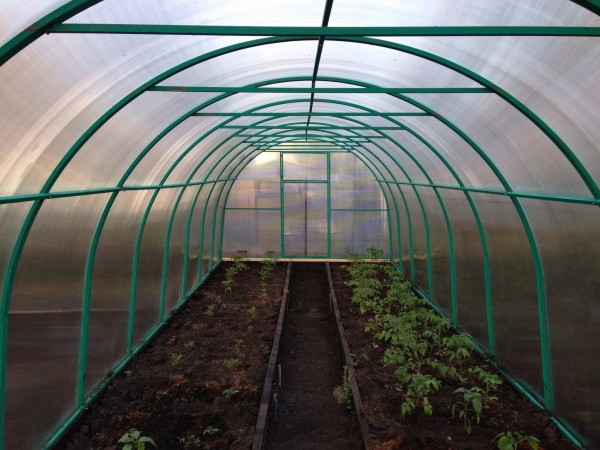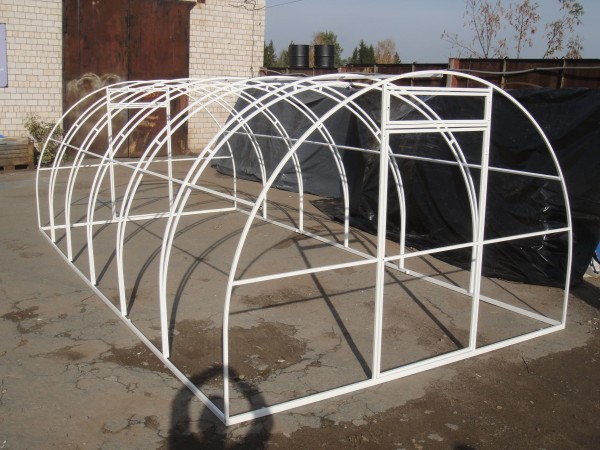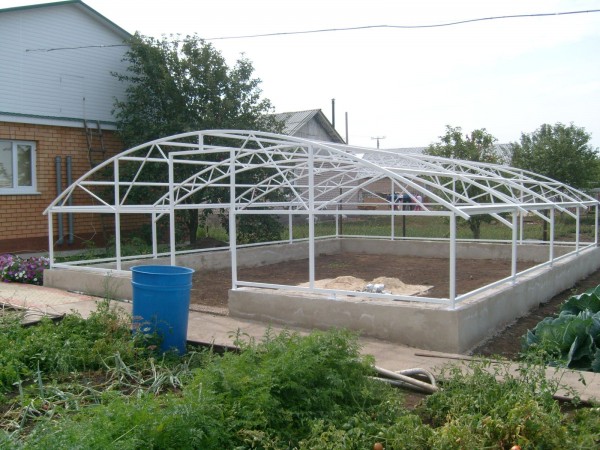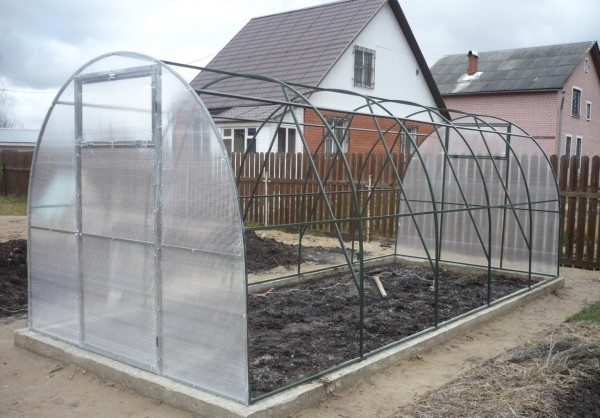How to draw and make a greenhouse frame from a profile pipe with your own hands
Content
Advantages and disadvantages
Profile pipes are called pipes, in which the cross section is not round, but of a different shape, there are oval, square and rectangular. They are very convenient to use in construction. The most popular are pipes with a square and rectangular cross-section, it is from them that the frames of greenhouses and greenhouses are often made. They are made of steel: more often carbon or alloy steel, less often stainless steel.
A profile pipe is similar in shape to a wooden block, but in building structures it is much more profitable - lightweight, durable, protected from corrosion. Greenhouses from a profile pipe, and even made by hand, turn out to be much cheaper than factory ones bought in a store. In addition to being economical, they have a number of other advantages.
The rectangular (or square) geometry of the section causes an interesting effect: with a low weight, the professional pipes provide the desired frame strength for greenhouses and greenhouses. Sufficient rigidity of the structure is achieved thanks to the four ribs of the pipe. The large contact area of the joints further adds strength to the entire structure. Greenhouse frame details can be connected by welding, self-tapping screws, screws, clamps, the possibility of combining these methods when building a greenhouse with your own hands is also an advantage. Profiled pipes are sold with an anti-corrosion coating, which is very convenient: you no longer need to think yourself how to protect the frame (only the cut points will have to be processed).
The frame made of shaped pipes has undeniable advantages:
- it is easy to mount and dismantle;
- the design has great strength with low weight;
- parts are versatile, easy to load and transport;
- he is not afraid of heavy physical and mechanical stress.
Low weight from an advantage can easily turn into a disadvantage if the greenhouse is not installed on a solid foundation in an area with strong winds.
Choosing a material
It is not difficult to make a frame for a greenhouse or greenhouse with your own hands, if you choose the right material for it. Usually choose between wood, PVC and steel. It is pleasant and quite easy to work with wood with your own hands, it is easy to install, it is an environmentally friendly material, but no processing will prolong its life. If the greenhouse is made of polycarbonate, then the coating will clearly outlive the wooden frame.
The steel frame is also susceptible to corrosion, although it can withstand heavy loads. The summer resident is unlikely to choose PVC pipes for making a greenhouse with his own hands due to the high cost, although this material is quite satisfied with its strength, safety and durability.
In search of material, summer residents most often stop at shaped pipes, and this is understandable - they make the most reliable greenhouses. They do not rust, withstand heavy loads, do not bend under the snow, and do not require special equipment or experience for installation. It is easy to attach polycarbonate to a steel pipe of rectangular cross-section, thanks to the shape of the cross-section, it is easy to make joints of elements.
Video "Assembling the greenhouse frame»
The process of assembling and installing the greenhouse frame and profile pipe. Fastening the frame elements.
Drawings and diagram
If the owner of the future greenhouse has decided on the material, then it's time to choose the shape. The choice is not very great.
- An arched greenhouse is usually used for growing short plants. It is convenient because the roof does not need to be cleaned, snow and debris do not linger on it.
- Tall (or climbing high) plants are grown in a tunnel greenhouse. Standard dimensions: width - 10 m, height - 5 m.
- Seedlings are grown in a pyramidal greenhouse, it takes up very little space on the ground, narrow, striving upward.
- The gable form seems to be the most convenient for those who want to grow plants of a different plan. It makes it possible to rationally dispose of the space inside the greenhouse, tall plants will perfectly fit in it, and low-growing vegetables and berries can be very compact in tiers or vertical planting.
- A back-to-wall greenhouse is just half a gable, attached to the wall of an existing building.
It is most convenient to make a gable greenhouse from a profile pipe a house - all the elements of the side lie in the same plane. It provides a sufficient amount of light and space for diverse plants, in addition, it allows the installation of additional elements - doors, vents. It is advisable to start work with the creation of a structure scheme, it will allow visualizing the owner's ideas about the greenhouse or greenhouse that he is going to build. Moreover, it is the scheme that will help determine the optimal dimensions of the greenhouse so as to make the correct calculation of pipe cutting. And then you need to make a drawing indicating all sizes of the greenhouse "house".
The standard length of a profile pipe is 6.05 m. To make one frame out of it, it is necessary to calculate its dimensions according to the diagram. If we assume a height of 1.7 m, then 3.4 m will be needed on both sides, and with a roof angle of 30 degrees, the width will be 2.24 m.The author of the drawing proposes to reduce it by 24 cm so that one sheet of polycarbonate is enough for the roof and from the sides there are 10 cm left for water flow. Since the calculation of materials for construction takes place at your own expense and with your own hands, it is worth listening to this opinion.
Frame erection
A light greenhouse made of shaped pipes and polycarbonate should be built on a solid foundation. It can be different: wood, brick, concrete. Most often, a monolithic concrete foundation is made for such a greenhouse, special anchors are laid in it for the subsequent attachment of a profile pipe to them. After the concrete has hardened, a profile pipe with a section of 40 mm by 20 mm is attached to these anchors, and all frames will be attached to it. Next, you need to assemble the frame by mounting the frames on the base.
The most crucial and important moment should be the assembly of the end frames, on which the doors (70 cm wide) and a window (80 cm wide) are planned. It is better to make the door from a pipe with a section of 40 mm by 20 mm, and a pipe with a section of 20 mm by 20 mm will be enough for a window. Frame hinges can be installed directly on the assembly site.
The frames of the frame can be placed at a distance of 1 m from each other - the rigidity and strength of the pipes will allow you to do this without losing the strength of the greenhouse. Moreover, they will be connected by segments of a square pipe with a section of 20 mm by 20 mm, they must be welded flush with the main profile. If the calculation was correct, the polycarbonate will lie flat on the frame. Installation of ready-made frames begins with an end frame with a door. It must be fixed by welding to the base with two braces from the corner. After 10 cm from the bend, horizontal ties are placed from the pipe, they are needed to fix the polycarbonate.
Video "Greenhouse frame made of shaped pipes»
Do-it-yourself step-by-step installation of the frame.





